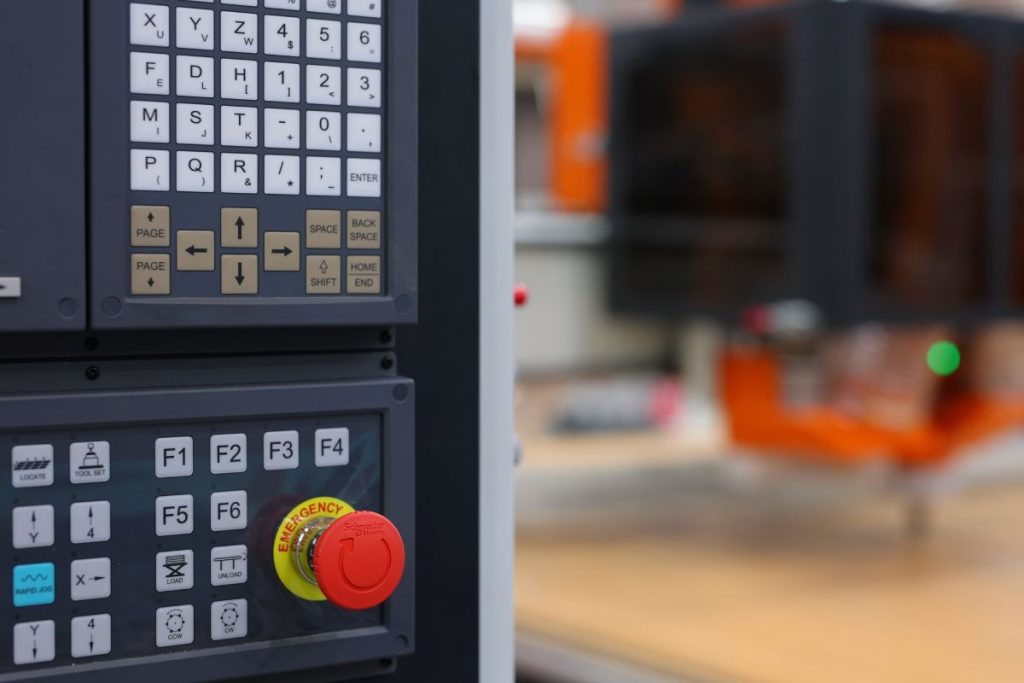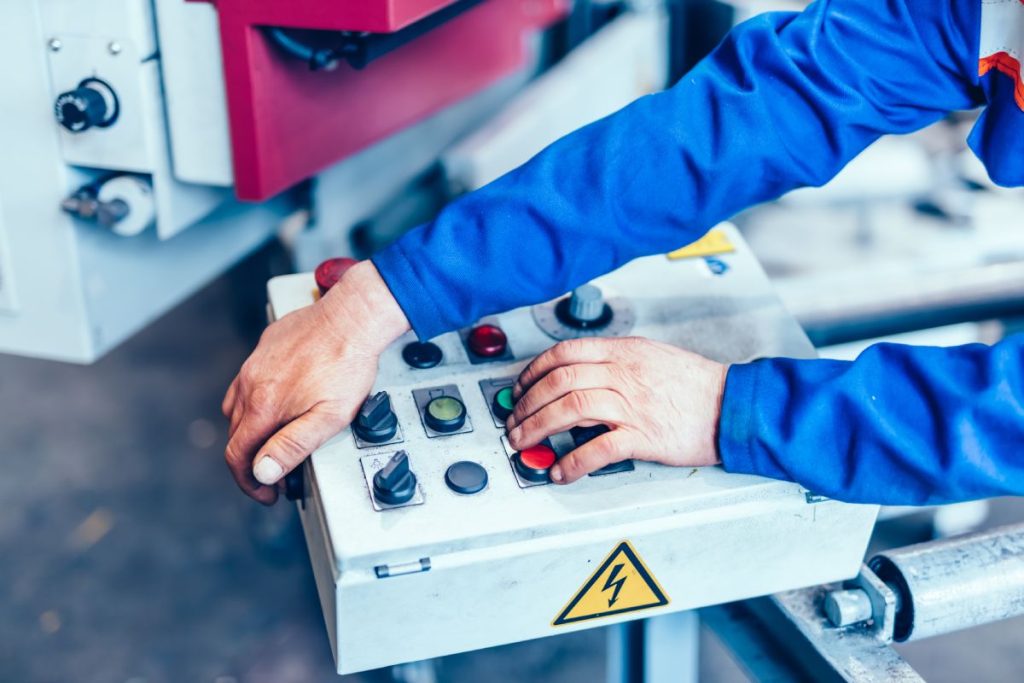Push buttons and switches are a huge part of our everyday lives, but a part that largely goes unnoticed. How often do you stop to think about the kind of switch that turns on your light, the button that you use to put the telly on, or the differences between them?
If you are like most people, the answer is probably never, and yet these buttons and switches play a vital role in our homes and workplaces. Read on to discover the differences between push buttons and switches, to discover which you might need in various situations and the advantages they both can offer you…
What is a push button?
A push button is a simple mechanism that you can push to turn something on or off, or to complete some other basic function. Unlike more complex switches that can often carry out multiple functions, push buttons tend to be used only in one way. To operate a device, piece of equipment, or anything with an electrical circuit.

The button itself tends to be made of something hard like metal or plastic, easy to use and to feel. Push buttons stand out from the switchboard or surface that they are placed on, or are easily found on the electrical item that they control. You can find them operating such devices as TVs and household appliances, power tools, consumer electronics, and industrial electronics.
Push buttons are incredibly useful in so many different applications. They work with an on/off or in/out function, where pressing the button causes the electrical circuit to either connect or disconnect. They can work momentarily, only while you are pressing the button, or can remain ‘on’ until you press it again, cutting off or reconnecting the circuit.
What is a switch?
A switch, similarly, works to connect or disconnect an electrical circuit. However, in this case, instead of a button being pressed to activate a certain function, the switch is flipped on or off. Switches within an electrical circuit must either be open or closed. When open, the circuit is broken and no electricity flows. When closed, the circuit is complete and the electricity flows.

In general, switches tend to be latching devices. This means that they hold their position once pressed. For example, a light switch that you have pressed to ‘on’ doesn’t turn back off once you let go. While some push buttons can work in the same way, not all do.
There is a vast range of switches to choose from, many of which carry out different functions and work in a variety of situations. You will require a different switch to adjust the dimness of your lights while blowing out candles at a birthday party or to set the mood for a romantic meal, for example, than simply to turn them on and off. When it comes to the switches needed for various industrial purposes, this difference can become critical.
What are the pros of using a push button?
There are many pros to using a push button over any other switch, some of which include:
- They are often priced lower than the majority of other switches available to buy – the more a switch can and must do, the more pricy it can be. Push buttons are not only cheaper but also fantastic value as they are perfectly suited to so many situations.
- They are simple to use – when you start looking at certain other switches, it isn’t always obvious what is on and off, which side to flip, or where to rotate to. With a push button, all you need to do is push.
- They are easy to find – the last thing you want when you need to press an emergency stop button or to get something up and running in a hurry, is to be confused by which switch to press. Having a clear push button makes it simple to use and easy to find all at the same time.
- They are small and take up less space – a push button tends to take up less space than a normal switch which may need to go up or down, on or off, instead of being pressed.
- They are durable – push buttons are made of hard material that wears down slowly, making it last longer than other materials and switches.
- They are customisable – another key aspect that makes push buttons so easy to use is that they are customisable, so you can make yours say what you want, the colour that you want.
What are the cons of using a push button?
There are some cons to using a push button, the most important of which is that they can, indeed, wear away over time. Pushing a button involves applying pressure, components working to affect a change in the electrical circuit and complete an action.
The more you use it, the quicker it will wear out, and the sooner you will need to get another push button. Otherwise, you risk it failing to work when you need it most.
There is also only so much that you can accomplish with a push button. For more complex electrical circuits and tasks, you may need a special switch to achieve the control that you need.

What are the pros of using a switch?
The main pro of using a switch over a push button is that they are more versatile. A switch can offer you more control over your equipment or device and over the electrical circuit itself. While a push button can be on or off, a switch can change things like speed, dimness, and more, as well as turning something on and off.
What are the cons of using a switch?
There are also several cons to using a switch, including the limited options for customisation, that they can be less easy to use than push buttons, and may be more prone to misuse and human error. People enjoy pushing buttons, and it can be a more obvious and simple choice for controlling your electrical equipment than a switch.
Final thoughts
Push buttons and switches both work to control electrical circuits, connecting and disconnecting them to control electrical equipment or devices. Push buttons are excellent choices for any situation where you only need to work with two functions, on and off, and where ease of use is paramount.
Switches can be useful in all kinds of circumstances, so think carefully about the kind of control you need, what outcome you need to create, and whether a push button or a switch would work best for your situation.











